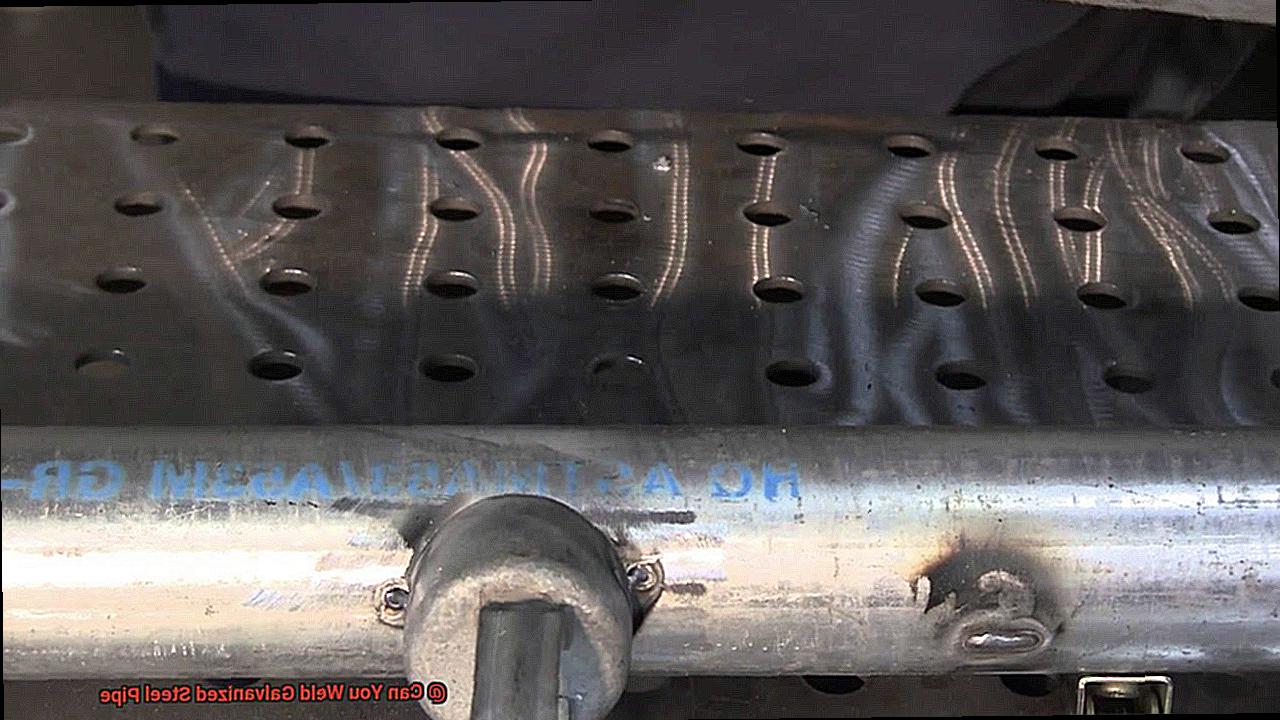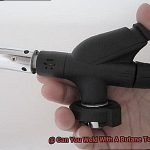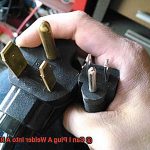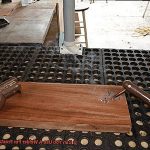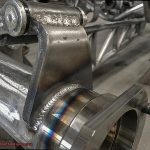Are you ready to tackle your next DIY project involving galvanized steel pipes? Before you jump in, it’s essential to understand the dos and don’ts of welding them. While galvanized steel pipes are coated with a layer of zinc that protects them from corrosion, welding can vaporize this coating, releasing harmful fumes that pose a risk to your health.
So, can you weld galvanized steel pipe? The answer is yes, but with caution. In this blog post, we’ll explore the risks associated with welding galvanized steel pipes and provide tips to keep you safe. We’ll also examine the best welding techniques for this type of material and highlight the necessary tools and equipment.
Whether you’re an experienced welder or a DIY enthusiast, our guide is a must-read before starting your next project. You’ll learn valuable information that will help you avoid common mistakes and achieve professional-looking results. So, let’s dive in together and discover how to weld galvanized steel pipes safely and effectively.
What is Galvanized Steel Pipe?
Contents
Galvanized steel pipe is a versatile and durable material that has a multitude of uses in construction, plumbing, and agriculture. The process of galvanization involves coating the steel with a layer of zinc, which creates a protective barrier against rust and corrosion. This makes galvanized steel pipe ideal for use in projects that are exposed to moisture and other environmental factors.
One of the primary benefits of galvanized steel pipe is its strength and longevity. The zinc coating helps prevent rust and corrosion, which can extend the lifespan of the pipe. Additionally, galvanized steel pipe is relatively inexpensive and easy to work with, making it a popular choice for many different types of projects.
However, welding galvanized steel pipe requires special precautions due to the presence of zinc on the surface of the material. When welding galvanized steel, the heat from the welding process can cause the zinc coating to vaporize and release toxic fumes that can be harmful if inhaled. To avoid these hazards, proper safety measures and techniques must be employed when welding galvanized steel pipe.
The first step in welding galvanized steel is to remove the zinc coating from the surface of the material. This can be done through either mechanical or chemical means, such as grinding or using an acid solution.
Once the zinc coating has been removed, it is essential to use proper welding techniques to prevent damage to the material. This includes using low-heat input and low-amperage welding processes like TIG or MIG welding, which can help avoid burning through or warping the material.
Challenges of Welding Galvanized Steel
Welding galvanized steel pipes can be a daunting task for welders due to the unique properties of this material. Galvanizing is a process of coating steel with zinc to protect it against rust and corrosion, but this protective layer can create challenges during welding.
One of the most significant challenges when welding galvanized steel is the release of toxic fumes. The zinc coating on the steel can release zinc oxide fumes when heated, which can cause respiratory problems if inhaled. Welders must take appropriate safety measures by wearing respirators and eye protection to avoid these hazards.
Another challenge is achieving a strong, consistent weld. The zinc coating can create inconsistencies in the weld, leading to weak spots and potential failure down the line. To combat this issue, welders may remove the galvanized coating from the areas they plan to weld or use specialized welding techniques designed for galvanized steel.
Welding galvanized steel can also be challenging due to its increased susceptibility to warping and distortion during the welding process. This is because the zinc coating has a lower melting point than the steel itself, causing it to vaporize and expand when heated.
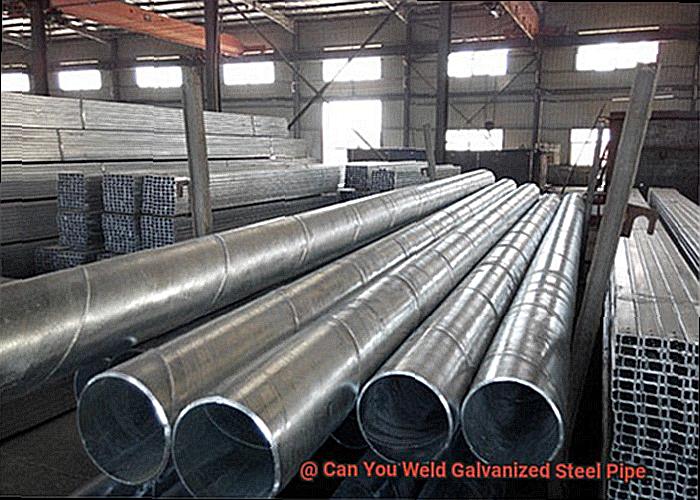
To avoid warping and distortion, welders may need to use preheating techniques or adjust their welding parameters accordingly.
But don’t let these challenges discourage you from taking on a welding project involving galvanized steel pipes. With proper safety precautions and welding techniques, it is possible to achieve successful results.
Before starting any welding project involving galvanized steel, welders must be aware of these challenges and take steps to mitigate them. By doing so, they can ensure a safe and durable final product that will stand the test of time.
Preparing the Material for Welding
If you’re a welder, you know that preparing the material for welding is a crucial step in ensuring a strong and durable final product. This is especially true when working with galvanized steel pipes, which are coated with a layer of zinc to protect them from rust and corrosion. However, the zinc coating can create toxic fumes when heated, making it essential to prepare the material correctly before welding.
The first step in preparing galvanized steel pipes for welding is to remove the zinc coating from the area to be welded. You can do this using a wire brush or grinder to expose the bare steel underneath. But, it’s important not to remove too much of the coating as it may weaken the pipe’s structure. So, take care when removing the zinc coating to ensure proper penetration of the weld.
After removing the zinc coating, the surface must be cleaned thoroughly to remove any remaining debris, oil, or other contaminants that could interfere with the weld. A solvent like acetone or a degreaser can be used to ensure a clean surface for welding. Trust us; taking this extra step will make all the difference in your final product.
In addition to cleaning the surface, it’s essential to ensure that the ends of the pipes are square and even before welding.
Achieving this requires cutting the pipe with a saw or pipe cutter and then grinding down any rough edges to achieve a smooth and even surface. This will prevent any misalignments and ensure a strong weld.
Proper Techniques for Welding Galvanized Steel
Welding galvanized steel pipes can be a rewarding and challenging task. However, the process requires special care as the zinc coating on galvanized steel is designed to protect the steel from rust and corrosion. When heated during the welding process, the zinc coating can evaporate, releasing toxic fumes that can be harmful to your health. As an expert in welding galvanized steel, I am here to share some proper techniques that will help you achieve a strong and durable final product.
Firstly, one of the primary techniques for welding galvanized steel is to remove the zinc coating before welding. This can be done using a wire brush or grinder. Removing the coating reduces the amount of fumes released during welding, ensuring your safety.
Using a low amperage setting when welding is also crucial. It prevents the zinc coating from evaporating too quickly, reducing the amount of fumes released during the welding process. Additionally, using a ventilation system helps remove any fumes produced during welding.
Safety should always be a top priority when welding galvanized steel. Protect yourself by wearing a respirator designed for welding fumes and gloves and other protective clothing to prevent burns and other injuries.
Safety Precautions When Welding Galvanized Steel
When it comes to welding galvanized steel pipes, safety should always be the number one priority. The process of welding this type of steel releases harmful fumes and smoke that can pose serious health risks if inhaled. Therefore, it is essential to take certain precautions to reduce the risk of exposure to these fumes and smoke.
First and foremost, proper ventilation is key. Welders should work in a well-ventilated area, preferably outdoors, or use exhaust fans to improve ventilation. This helps to remove harmful fumes and smoke from the welding area and keep the air clean for everyone’s safety.
Wear protective clothing and equipment is also critical when welding galvanized steel pipes. This includes a welding helmet with a respirator, gloves, long-sleeved shirts, and pants made of non-flammable materials. These items help protect welders from harmful fumes and smoke as well as the heat generated during the welding process.
To further ensure safety, it is important to properly clean and prepare the surface of the galvanized steel pipe before welding. Welding on dirty or oily surfaces can produce toxic fumes that can be harmful to the welder’s health. Therefore, it is recommended to clean the surface with a wire brush or grinder before welding.
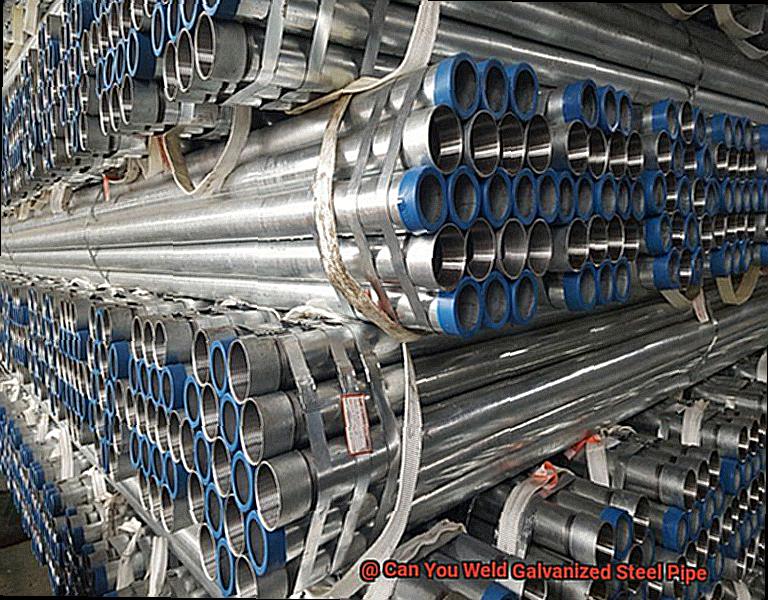
Moreover, direct contact with the galvanized coating on the steel pipe should be avoided at all costs. The zinc coating on galvanized steel contains zinc oxide which can be harmful when inhaled. Therefore, welders should use a grinder or file to remove the coating before welding to reduce exposure to this harmful substance.
Finally, welders should be aware of potential hazards associated with welding galvanized steel pipes and take appropriate safety measures. They must also ensure that their work area is free of any flammable materials that could ignite during the welding process.
g30uszEfHoU” >
Conclusion
To sum up, welding galvanized steel pipes can be a tricky endeavor, but it’s not impossible. With the right techniques and safety measures in place, you can achieve great results. Galvanized steel pipes are coated with zinc to protect them from rust and corrosion, but this coating can produce toxic fumes when heated during welding. You must take precautions like wearing protective clothing and working in well-ventilated areas.
Proper preparation is also essential for a durable final product. This includes removing the zinc coating from the area to be welded, cleaning the surface thoroughly, and ensuring even ends. To avoid burning through or warping the material, use low-heat input and low-amperage welding processes such as TIG or MIG welding.
Welding galvanized steel pipes requires patience and attention to detail, but it’s an affordable option for various projects. By following the tips outlined in this guide, both DIY enthusiasts and experienced welders can achieve professional-looking results while staying safe from harmful fumes and smoke.
